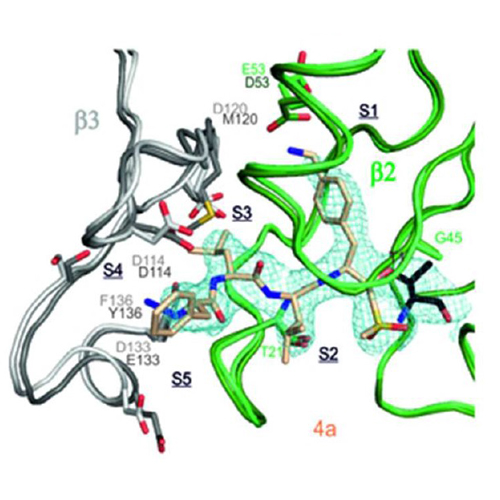Incorporation of Non-natural Amino Acids Improves Cell Permeability and Potency of Specific Inhibitors of Proteasome Trypsin-like Sites
15-Jan-2013
J. Med. Chem., 2013, DOI: 10.1021/jm3016987, 56 (3), pp 1262–1275 published on 15.01.2013
Proteasomes degrade the majority of proteins in mammalian cells by a concerted action of three distinct pairs of active sites. The chymotrypsin-like sites are targets of antimyeloma agents bortezomib and carfilzomib. Inhibitors of the trypsin-like site sensitize multiple myeloma cells to these agents. Here we describe systematic effort to develop inhibitors with improved potency and cell permeability, yielding azido-Phe-Leu-Leu-4-aminomethyl-Phe-methyl vinyl sulfone, and a fluorescent activity-based probe for this site. X-ray structures of 4a and related inhibitors complexed with yeast proteasomes revealed the structural basis for specificity. Nontoxic to myeloma cells when used as a single agent, 4a sensitized them to bortezomib and carfilzomib. This sensitizing effect was much stronger than the synergistic effects of histone acetylase inhibitors or additive effects of doxorubicin and dexamethasone, raising the possibility that combinations of inhibitors of the trypsin-like site with bortezomib or carfilzomib would have stronger antineoplastic activity than combinations currently used clinically.











